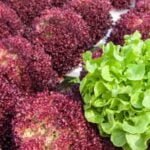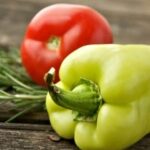Straw bale gardening vegetables is a unique and innovative way to grow a bounty of produce without the need for traditional soil-based gardening. This method involves using straw bales as a container and growing medium for various vegetables, making it an ideal option for those with limited space or poor soil quality.
In this article, we will explore the ins and outs of straw bale gardening, including its benefits, best practices for planting and caring for vegetables, common issues that may arise, and the satisfaction of enjoying a successful harvest.
Straw bale gardening has gained popularity in recent years due to its simplicity and versatility. By repurposing straw bales as planters, gardeners can create thriving vegetable gardens virtually anywhere, from urban balconies to rural backyards. The benefits of using straw bales for vegetable gardening are numerous, including improved drainage, reduced weed growth, and the ability to control soil conditions more effectively than traditional ground-based gardens.
In the following sections, we will discuss how to find the right location for your straw bale garden, prepare the straw bales for planting, select the best vegetables for this method of gardening, and address common issues that may arise. Whether you are an experienced gardener looking to try something new or a beginner seeking a straightforward way to grow your own produce, straw bale gardening offers a rewarding and enjoyable experience.
Benefits of Using Straw Bales for Vegetable Gardening
Straw bale gardening offers numerous benefits for those looking to grow vegetables in a convenient and sustainable way. One of the main advantages of using straw bales is that they provide a nutrient-rich growing medium for plants, allowing for healthy and abundant vegetable yields. The decomposition of the straw inside the bales creates a warm and fertile environment that promotes optimal root growth and overall plant health.
Additionally, straw bale gardening is an excellent option for individuals with limited space or poor soil conditions. By utilizing straw bales, gardeners can set up their vegetable garden on any flat surface, including patios, driveways, or even rooftops. This method eliminates the need for traditional garden beds and allows individuals who may not have access to suitable soil to still enjoy cultivating their own fresh produce.
Furthermore, straw bale gardening can be a more accessible option for individuals with physical limitations or disabilities. The elevated height of the straw bales can make it easier for people to tend to their vegetable plants without having to bend down or kneel. This accessibility can make gardening a more enjoyable and feasible activity for those who may otherwise struggle with traditional methods of vegetable cultivation.
| Benefits | Details |
|---|---|
| Nutrient-Rich Growing Medium | Straw bales provide a fertile environment for healthy plant growth. |
| Space and Soil Flexibility | Ideal choice for individuals with limited space or poor soil conditions. |
| Accessibility | Elevated height of straw bales makes gardening more manageable for those with physical limitations. |
Finding the Right Location for Your Straw Bale Garden
When it comes to starting a straw bale garden for vegetables, one of the first steps is finding the perfect location for your garden. The right location can make all the difference in the success of your vegetable plants, so it’s important to carefully consider where to place your straw bales.
Here are some factors to keep in mind when finding the right location for your straw bale vegetable garden:
1. Sunlight: Ensure that the location you choose receives plenty of sunlight, as most vegetables thrive in at least 6-8 hours of direct sunlight each day.
2. Accessibility to Water: Consider how easy it will be to water your straw bales. Ideally, the location should be close to a water source or easy to reach with a hose or watering can.
3. Drainage: It’s important to place your straw bale garden in an area with good drainage to prevent waterlogged roots and potential rotting of the bales.
Remember that once you have chosen a location, it may not be easy to move your straw bales later on, so take the time to find the best spot for your vegetable garden from the beginning. With careful consideration and planning, you can set up your straw bale garden for vegetables in an optimal location for successful growth and harvest.
And remember, always monitor how much sun and water your plants are receiving as they grow.
Preparing the Straw Bales for Planting
Before you can start planting your vegetables in a straw bale garden, it is essential to properly prepare the straw bales. This process involves conditioning the bales to create a fertile environment for your vegetables to thrive. Conditioning the bales typically takes about two weeks, so it’s important to plan ahead before you begin planting.
To prepare the straw bales, start by thoroughly soaking them with water. It’s crucial to ensure that the bales are completely saturated, as this will kickstart the decomposition process inside the bales. Once the bales are soaked, you can then begin adding a nitrogen source, such as blood meal or poultry manure, to initiate decomposition.
Throughout the conditioning process, it’s important to monitor the internal temperature of the straw bales. The ideal temperature for planting is around 100-120°F (37-49°C), so regularly check with a compost thermometer to ensure that the temperature within the bales is at an optimal level for planting your vegetable starts or seeds.
After approximately two weeks of conditioning, your straw bales should be ready for planting your vegetable starts or seeds. At this point, you will have created a nutrient-rich environment within the bales that will provide an excellent growing medium for your vegetables.
| Preparation Step | Time Frame |
|---|---|
| Soaking Straw Bales | 1 day |
| Adding Nitrogen Source | 2 days |
| Monitoring Internal Temperature | 2 weeks |
Selecting the Best Vegetables for Straw Bale Gardening
When it comes to selecting the best vegetables for straw bale gardening, there are several factors to consider. Not all vegetables thrive in this unique gardening method, so it’s important to choose varieties that will do well in a straw bale environment. Here are some of the best vegetables to consider for your straw bale garden:
Best Vegetables for Straw Bale Gardening
- Tomatoes: Tomatoes are a popular choice for straw bale gardening due to their relatively shallow root systems and high yield. They can be easily grown in straw bales and provide an abundant harvest throughout the growing season.
- Zucchini: Zucchini plants also do well in straw bales, producing large, delicious squash that can be harvested throughout the summer months. They require ample space to spread out, making them a great option for sprawling over a straw bale garden.
- Cucumbers: Cucumbers thrive in the warm and moist environment provided by straw bales. They can be trained to grow vertically, making them a space-saving option for smaller gardens.
- Peppers: Both sweet and hot peppers are excellent choices for straw bale gardening. They enjoy the warmth retained by the straw bales and produce an abundant harvest of flavorful peppers.
- Lettuce and Leafy Greens: These fast-growing, shallow-rooted vegetables are well-suited for planting directly into the tops of straw bales. They can be harvested continuously throughout the season, providing fresh greens for salads and other dishes.
By selecting these vegetables for your straw bale garden, you can ensure a successful growing season with a bountiful harvest of fresh produce.
It’s important to note that while these vegetables are well-suited for straw bale gardening, other options such as beans, peas, and herbs can also thrive in this unique growing environment. When choosing your vegetables, consider your climate, available space, and personal preferences to create a diverse and productive straw bale garden.
Overall, selecting the best vegetables for your straw bale garden is essential for achieving success with this innovative gardening method. By choosing appropriate varieties that thrive in this environment, you can enjoy a fruitful harvest of delicious homegrown produce throughout the growing season.
Planting and Caring for Vegetables in a Straw Bale Garden
Preparing the Straw Bales for Planting
Before planting vegetables in your straw bale garden, it’s crucial to properly prepare the bales. This involves “conditioning” the bales over a period of several weeks to kickstart the decomposition process inside the bales. To condition your straw bales, start by watering them thoroughly and then adding a nitrogen-rich fertilizer on top. Over the next couple of weeks, continue to water and fertilize the bales, which will help create a nutrient-rich environment for your vegetable plants.
Selecting the Best Vegetables for Straw Bale Gardening
Not all vegetables thrive in a straw bale gardening environment, so it’s important to carefully select what you plant. Some of the best vegetables for growing in straw bales include tomatoes, peppers, cucumbers, zucchini, squash, and even certain leafy greens like lettuce and spinach. These plants tend to do well in the warm and nutrient-rich conditions of a decomposing straw bale.
Planting and Maintenance
When it comes time to actually plant your selected vegetables, simply make a hole or trough in the top of the conditioned straw bale and insert your seedlings or seeds. Proper spacing is essential to give each plant enough room to grow without competing with neighboring plants.
Throughout the growing season, ensure that your vegetable plants receive adequate water and monitor for any signs of pests or disease that may need addressing. Additionally, as the straw bales continue to decompose throughout the season, consider adding additional nutrients through organic fertilizer applications to support healthy plant growth.
Common Issues and How to Address Them in Straw Bale Gardening
When it comes to straw bale gardening vegetables, there are a few common issues that may arise during the growing season. Knowing how to address these issues can help ensure a successful harvest and thriving garden.
Weed Control
One common issue with straw bale gardening is weed control. While straw bales can help reduce the amount of weeds that sprout up in your garden, they are not completely immune to them. To address this issue, consider laying down a layer of landscaping fabric or newspaper beneath the straw bales before planting. This can help further suppress weed growth and make it easier to manage any that do pop up.
Nutrient Depletion
Over time, the straw bales used for gardening can start to lose some of their initial nutrients as they break down. To combat this issue, consider adding a balanced fertilizer or compost to the top of the straw bales throughout the growing season. This will help replenish essential nutrients and keep your vegetable plants healthy and productive.
Moisture Management
Straw bales have a tendency to dry out quickly, especially in hot and sunny climates. To address this issue, be sure to water your vegetable plants regularly, and consider using a mulch on top of the straw bales to help retain moisture. Additionally, you can also try watering your garden in the early morning or late evening when temperatures are cooler, which can help reduce evaporation.
By being aware of these common issues and knowing how to address them, you can enjoy a successful and productive vegetable garden using the straw bale gardening technique. With proper care and attention, you’ll be able to harvest an abundance of fresh, flavorful vegetables from your straw bale garden throughout the growing season.
Harvesting and Enjoying the Fruits of Your Straw Bale Vegetable Garden
In conclusion, straw bale gardening is a unique and effective method for growing vegetables that offers many benefits. The process of preparing the straw bales for planting may take some time and effort, but the results are well worth it. Once you have selected the best vegetables for your straw bale garden and planted them with care, you can look forward to a bountiful harvest of fresh, healthy produce.
One of the biggest advantages of using straw bales for vegetable gardening is the reduced need for weeding. This not only saves time and effort but also allows your plants to thrive without competition from unwanted plants. Additionally, straw bales provide excellent insulation and moisture retention, which can result in healthier, more productive vegetable plants.
As with any form of gardening, it’s important to keep an eye out for common issues such as pests and diseases that may affect your vegetable plants. Regular monitoring and timely intervention can help address these challenges effectively.
Ultimately, the joy of harvesting and enjoying the fruits of your labor in a straw bale vegetable garden is a rewarding experience that makes all the hard work worthwhile. So go ahead and give this innovative gardening method a try – you may be pleasantly surprised by the results.
Frequently Asked Questions
Can You Grow Vegetables in a Bale of Straw?
Yes, it is possible to grow vegetables in a bale of straw. The process involves conditioning the straw bale, adding compost and soil, and then planting seeds or seedlings directly into the bale.
What Are the Disadvantages to Straw Bale Gardens?
One disadvantage of straw bale gardens is that they can require more frequent watering than traditional garden beds, especially during hot weather. Additionally, some plants may struggle to establish strong root systems in the bales.
How Long Does It Take to Condition Straw Bales for Gardening?
Conditioning straw bales for gardening typically takes around two weeks. This process involves keeping the bales wet while adding water-soluble fertilizer to encourage decomposition inside the bale. Once the internal temperature cools down, the bales are ready for planting.

If you’re looking to get into vegetable gardening, or are just looking for some tips on how to make your current garden better, then you’ve come to the right place! My name is Ethel and I have been gardening for years. In this blog, I’m going to share with you some of my best tips on how to create a successful vegetable garden.





